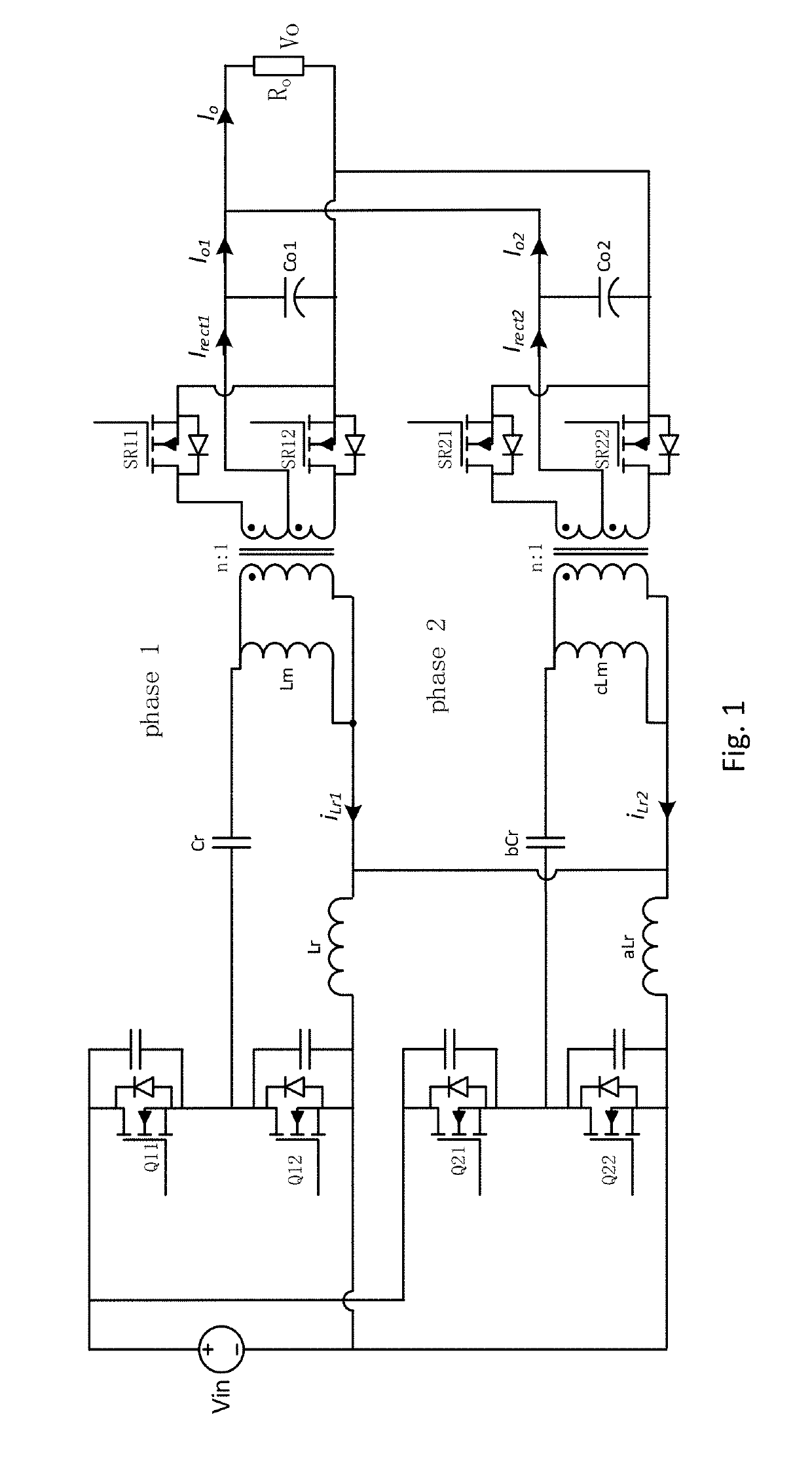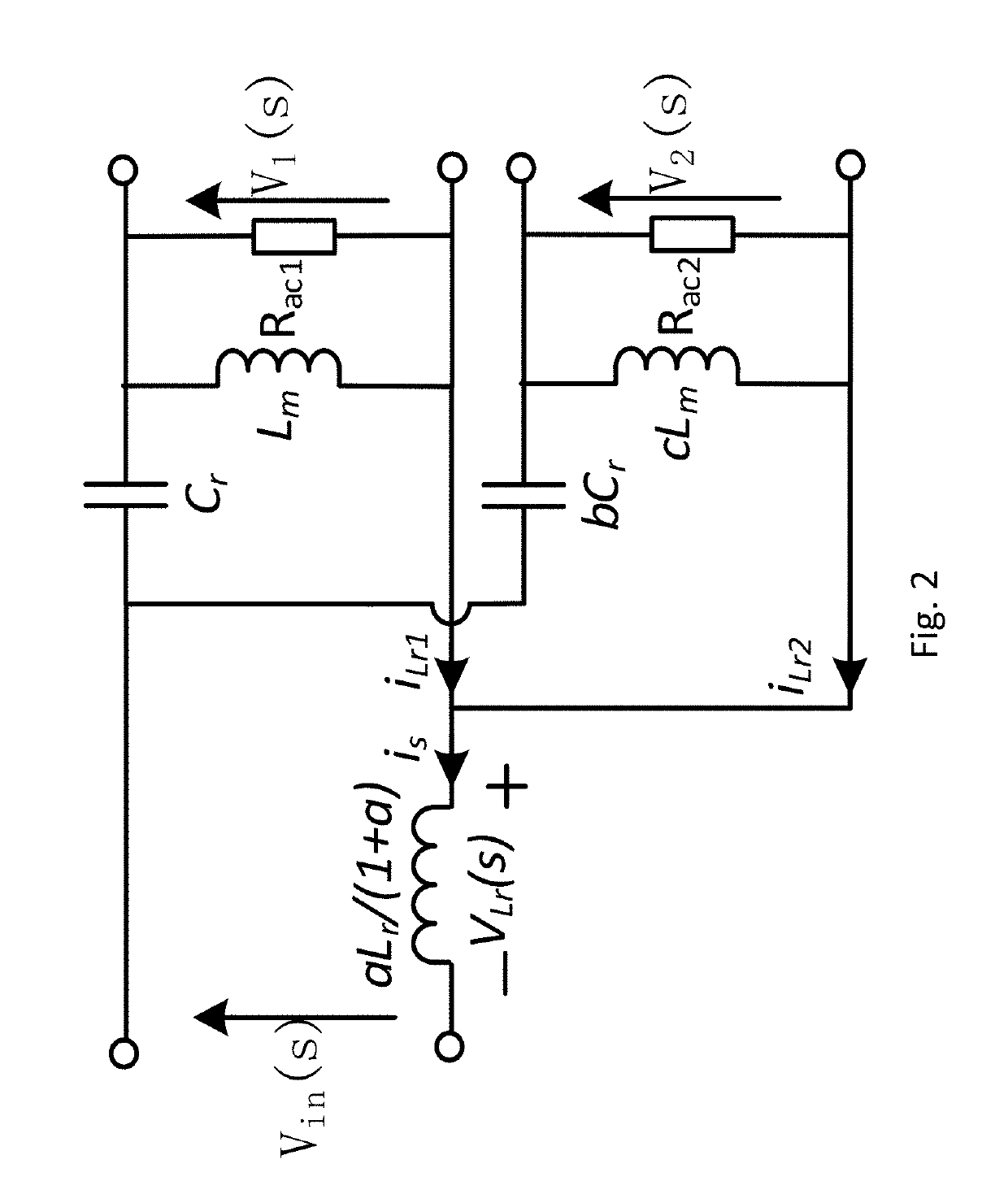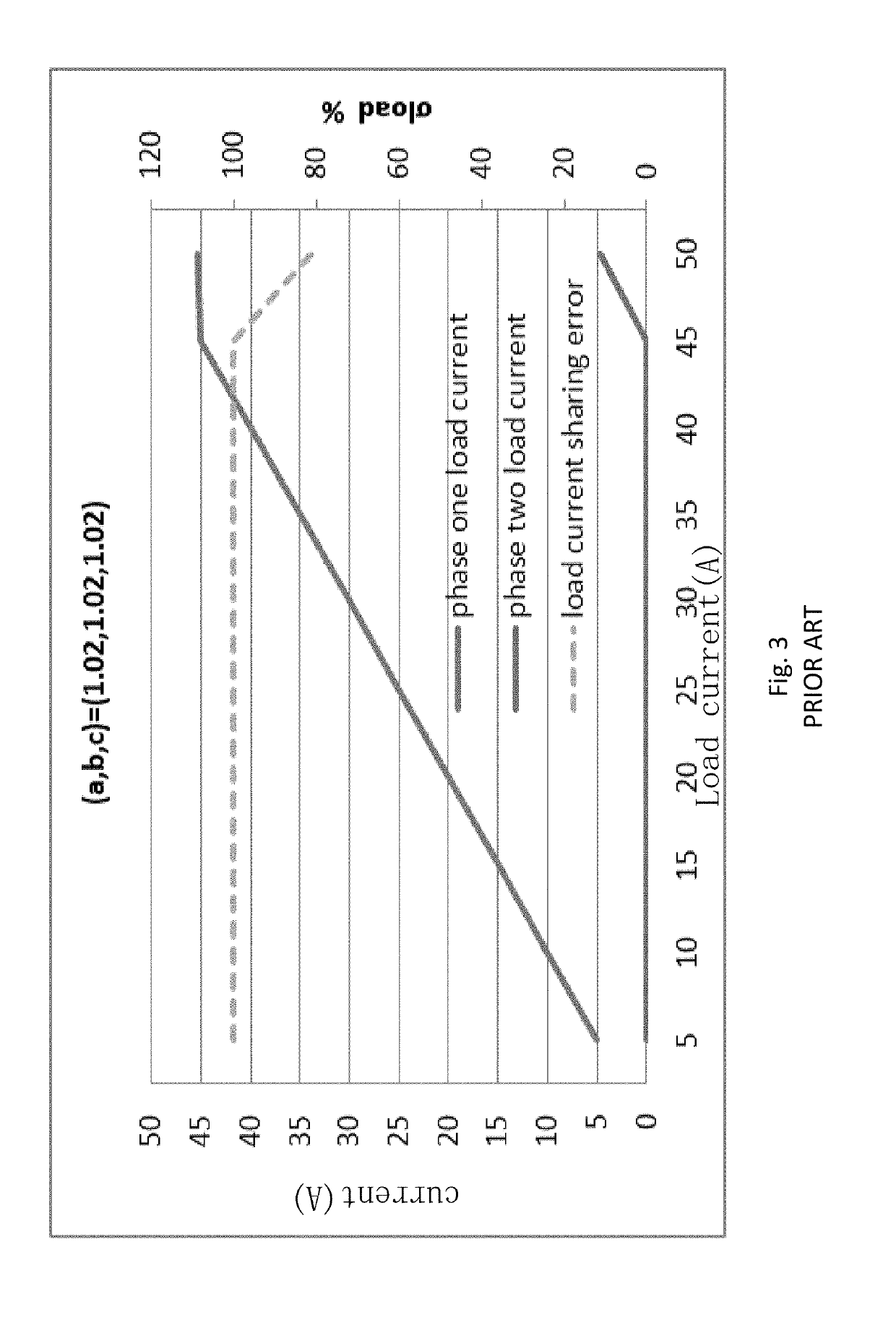Modular parallel technique for resonant converter
a resonant converter and module parallel technology, applied in the direction of electric variable regulation, process and machine control, instruments, etc., can solve the problems of parallel power supply, higher cost of interleaved, and additional gate-drive circuits, so as to achieve no additional cost, no additional control, and no additional cost
- Summary
- Abstract
- Description
- Claims
- Application Information
AI Technical Summary
Benefits of technology
Problems solved by technology
Method used
Image
Examples
Embodiment Construction
[0045]In the common-inductor current-sharing method for multi-phase LLC resonant converter of the preferred embodiments of the present invention, the series resonant inductors in each phase are connected in parallel. No additional components are needed to achieve current sharing. Analysis of the common-inductor current-sharing method shows that the relative resonant current is significantly reduced. Simulated and experimental results show that the resonant current error is reduced by 63 times and is only 0.44% at 600 W total load power. As a comparative example, a common-capacitor current-sharing method is also discussed. The common-capacitor current-sharing method is only able to achieve a resonant current error of 5% at 600 W total load power as shown in FIG. 32. The LLC resonant converter shown in FIG. 30 can only achieve a resonant current error of 27% at 600 W total load power.
[0046]FIG. 1 shows a two-phase LLC resonant converter using the common-inductor current-sharing method...
PUM
 Login to View More
Login to View More Abstract
Description
Claims
Application Information
 Login to View More
Login to View More - R&D
- Intellectual Property
- Life Sciences
- Materials
- Tech Scout
- Unparalleled Data Quality
- Higher Quality Content
- 60% Fewer Hallucinations
Browse by: Latest US Patents, China's latest patents, Technical Efficacy Thesaurus, Application Domain, Technology Topic, Popular Technical Reports.
© 2025 PatSnap. All rights reserved.Legal|Privacy policy|Modern Slavery Act Transparency Statement|Sitemap|About US| Contact US: help@patsnap.com



